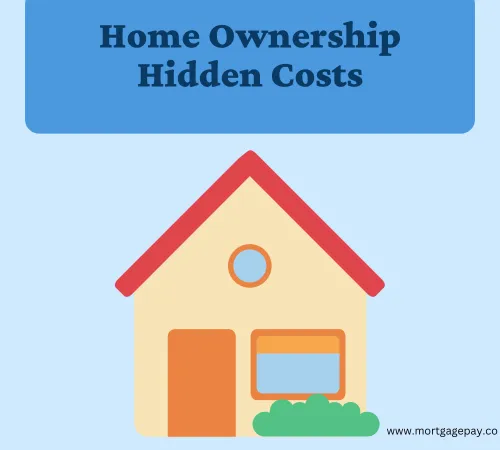
When you’re preparing to buy a home, it’s important to understand the hidden costs of homeownership. While the focus is often on the down payment and the monthly mortgage payment, the hidden costs of homeownership can catch first-time buyers off guard. Understanding these hidden costs of homeownership is crucial to ensuring you’re financially prepared for the long-term commitment of owning a home.
1. Property Taxes
Property taxes are one of the most significant ongoing hidden costs of homeownership. These taxes are based on the assessed value of your property and the tax rate in your area. Depending on where you live, property taxes can add hundreds or even thousands of dollars to your annual expenses. It’s important to consider property taxes as a hidden cost of homeownership when budgeting for your mortgage.
2. Homeowner’s Insurance
Lenders require homeowners to carry insurance to protect their investment. The cost of homeowner’s insurance is another hidden cost of homeownership that can vary widely based on factors such as the location of your home, the age and condition of the property, and the amount of coverage you choose. In addition to standard coverage, you might need extra policies for flood or earthquake insurance, which are additional hidden costs of homeownership, depending on your location.
3. Private Mortgage Insurance (PMI)
If your down payment is less than 20% of the home’s purchase price, you will likely need to pay for Private Mortgage Insurance (PMI). PMI is a significant hidden cost of homeownership that protects the lender in case you default on your loan. The cost of PMI can range from 0.3% to 1.5% of the original loan amount annually, which can add a substantial amount to your monthly mortgage payment, making it an important hidden cost of homeownership to consider.
4. Maintenance and Repairs
Maintenance and repairs are ongoing hidden costs of homeownership. Homes require regular maintenance to keep them in good condition, and these hidden costs of homeownership include everything from routine upkeep like lawn care and gutter cleaning to more significant repairs such as fixing a leaky roof or replacing an HVAC system. Experts recommend setting aside 1% to 2% of your home’s value each year for these hidden costs of homeownership.
5. Utilities
Utility costs are another hidden cost of homeownership that can vary significantly depending on the size of your home, your location, and your usage habits. Heating, cooling, water, electricity, and garbage collection are all hidden costs of homeownership that will add to your monthly budget. If you’re moving from a smaller home or an apartment, these hidden costs of homeownership might be higher than what you’re used to.
6. HOA Fees
If you’re buying a home in a community with a Homeowners Association (HOA), you’ll need to budget for HOA fees. These fees cover the cost of maintaining common areas and amenities like pools, gyms, and landscaping, and they represent another hidden cost of homeownership. HOA fees can range from a few hundred to several thousand dollars a year, depending on the community, making them a significant hidden cost of homeownership.
7. Closing Costs
Closing costs are the fees and expenses you pay when finalizing your mortgage, and they represent one of the initial hidden costs of homeownership. These can include loan origination fees, title insurance, escrow fees, and more. Closing costs typically range from 2% to 5% of the home’s purchase price, so it’s important to factor this hidden cost of homeownership into your overall budget when buying a home.
Homeownership is a rewarding investment, but it’s essential to be aware of the hidden costs of homeownership. By considering these hidden costs of homeownership, you can better prepare for the financial responsibilities of owning a home and avoid any unpleasant surprises down the road. Taking the time to budget for these hidden costs of homeownership ensures that your dream home remains a source of pride and security, rather than a financial burden.
